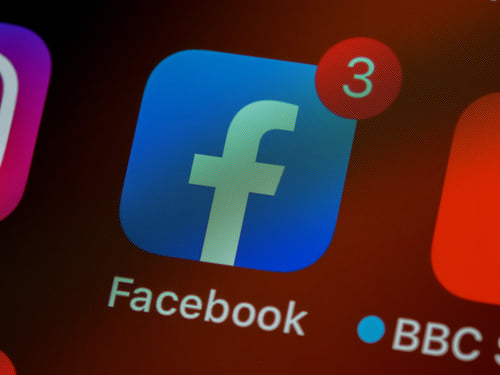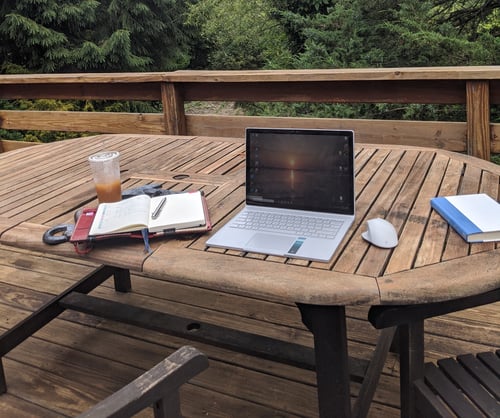Even though you may not think your work is in a creative space, I bet it is. Engineers have to come up with creative solutions to solving problems, all on a budget or within a certain spec. Marketers have to be creative with their content and tactics for lead generation. This kind of creativity is productive and makes a difference in the world, one way or another.
When I was a kid I loved to paint— and paint I did. I still have some of them in storage, though these days I stick to quick sketches of website layouts or visualizing to one of my students what the heck I’m talking about. Because others knew I like to paint and draw, they’d ask me to do so at a moment’s notice...and they’d get nothing. I’d freeze, saying, "Oh, I can’t now."
Being creative when you’re in the spotlight is impossible. Being creative at a moment’s notice after you’ve already had a long day of figuring out what to work on next, answering emails, etc, is doubly impossible. However, if you have a process for getting into a creative mindset and making it as easy as possible to do great work, then good ideas can happen.
Ship It
A great idea or piece of work doesn’t just come out of nowhere. It comes out of all the previous failures you learn from, which in this day and age are easier to iterate through. As Greg Satell writes:
The ugly truth is that most creative acts are failures, which is why, as Robert Weisberg points out in his book Creativity, outstanding creative work is tightly linked to prolific output. The more work we produce, the more great work we produce. The problem is that it’s often hard to separate the good from the bad.
Malcolm Gladwell illustrated in David and Goliath how this can create serious difficulties. Even geniuses like Monet and Renoir found it difficult to stand out when they had one or two paintings among the thousands at Paris’s famous Salon exhibition, but gained traction when they created their own show where they could display more works.
Clearly, failure in the analog world was expensive, tiresome and frustrating. But in the digital world, we can simulate failure cheaply and easily. From CAD software to 3D printers, A/B testing to agent based models, technology lets us experiment in the world of bits before we invest resources in the world of atoms.
And that’s how technology enhances creativity, it drastically reduces the cost of actualizing our intent. We can search domains, mix and match ideas and test concepts almost effortlessly. That means we can try out a lot more possibilities and increase the chances of producing something truly outstanding.
Producing a lot of work means the chances that you’ll create something great and worthwhile increases. But how do you get to the point where creating in quantity comes naturally?
Process
Everyone subconsciously has their own process for getting things done. It may not be very efficient or effective, but it’s there. Perhaps you need to put on a certain playlist whenever you write, or maybe you must have complete silence. Maybe you design better while you’re drinking coffee in the morning or maybe you prefer to work late at night.
There’s silent checklists of things we do in order to set ourselves up for producing creative work, you just need to actually write that process down and make it a conscious choice to follow it. Going through the same steps every time means it becomes a habit, and muscle-memory.
The key to avoiding these traps is understanding how you approach a challenge. The latest creativity research finds we all use our creativity in different ways, but follow a common problem-solving process. Once you understand the creative process, you can intentionally apply it, boosting your creativity and efficiency while strengthening your initiatives. - Chris Grivas
Personally, I work from the cafe every Tuesday and Thursday. I know my laptop is already in my bag from teaching a class the night before and all I need to do is add my mouse and noise-cancelling headphones. I go in, order coffee and breakfast and while I'm waiting for my food, I write. The timing is usually perfect and I can read while I eat.
This is all habit for me (and why everyone at the cafe knows who I am). After this I dive into the tasks for the day, which I had already planned out the night before. I put on my headphones, play one of three playlists I can work to and crank through.
Iterate
Once you understand how you work and have your process written down, you can refine it.
Whenever you come across a roadblock, make your process more implicit. I forgot my headphones a few times and wasn’t able to get much done at the cafe. Now I remember to put my headphones on top of or in my bag the night before. It’s an extra step in my process that allows me to be at my best in the morning, which is when I work best.
With your process in place, the only job you have now is to follow it. Go through the steps, make it a habit and you'll find that being creative is a byproduct. As they say, work the plan. You’ll no longer waste time and energy making decisions, the decisions are already made.
A lack of structure and process increases the need for willpower, causes decision fatigue, and makes it much more difficult to manage our time energy and attention. - Srinivas Rao
Your Process
Again, it doesn’t matter what industry you’re in, a certain amount of creativity is required for your job, and you need to be able to get into the right mindset to do your best work.
What’s your process?
I empower businesses and marketers to create automated content systems that elevate sales and delight customers. Here’s how it works.



